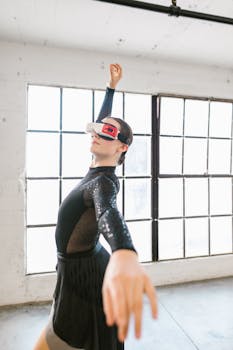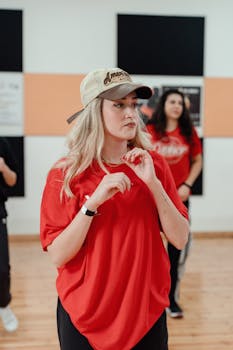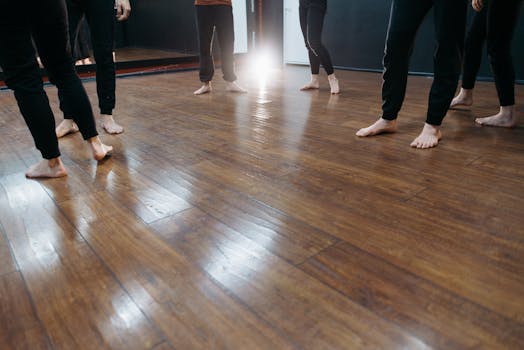Creating effective dance materials is essential for dance educators, studio owners, and performers alike. Quality materials support learning, enhance choreography, and elevate performances. Whether you’re developing handouts or online resources, the right tools can make a significant difference.
In the realm of dance, educational materials cater to various needs such as technique, choreography, and performance preparation. Well-designed materials not only provide information but also inspire creativity. Consequently, understanding how to create these resources is vital to success in the dance community.
This article offers a comprehensive guide on creating dance materials. Covering everything from foundational concepts to practical applications, the sections below will equip you with the knowledge and tools needed for effective material development.
Understanding Your Audience
Recognizing your audience is crucial when developing dance materials. Tailoring content to meet their needs enhances engagement and comprehension. Identify whether your audience comprises beginners, intermediates, or advanced dancers.
Furthermore, considering the age group of your audience impacts content creation. Children, teens, and adults often have differing learning styles and preferences, requiring varied approaches to instruction and resources.
Gathering feedback from previous materials also provides insights. Listening to the needs of your students helps refine your approach and create more relevant tools. Instructors benefit from open communication with students to gauge effectiveness.
Moreover, researching existing materials offers valuable context. Analyzing successful resources can inspire innovative ideas. Determine what resonates most with your target audience and adapt your strategies accordingly.
In summary, understanding your audience refines your approach to creating dance materials. This foundational step shapes the development of effective resources tailored to your specific dance community.
Defining Objectives and Goals
Clearly defined objectives guide your dance material creation process. Identifying what you aim to achieve helps in organizing content effectively. Goals can range from teaching technical skills to preparing students for performances.
Establishing specific, measurable, achievable, relevant, and time-bound (SMART) objectives further enhances the production process. For instance, instead of a vague goal like “improve technique,” specify “increase plié depth among students within four weeks.”
Consider the learning outcomes desired from your materials. Ensure that these outcomes align with the overall vision of your dance program. Successful objectives lead to more focused content and better results.
Engage with other educators to refine your objectives. Collaborating with peers can prompt new insights, improving your overall approach. Their experiences might highlight overlooked aspects that deserve attention.
To summarize, defining objectives and goals is essential. This focus not only enhances content quality but also strengthens the overall effectiveness of your dance materials.
Choosing the Right Format
The format of your dance materials significantly impacts accessibility and engagement. Consider various options, such as printed handouts, digital PDFs, videos, or online platforms for distribution. Each format offers distinct advantages.
Printed materials provide a tangible resource that dancers can keep for reference. On the other hand, digital formats allow for easy distribution and updates. Analyze your audience’s preferences when selecting the best format.
Including multimedia elements enhances the learning experience. Videos, animations, and interactive content foster deeper engagement among dancers. These tools can help illustrate concepts that might be challenging to express through text alone.
Bearing in mind the technological skills of your audience is also essential. Ensure that the format you choose is accessible to everyone involved. This consideration helps prevent frustration and encourages effective use of materials.
In conclusion, choosing the right format for your dance materials plays a pivotal role in their effectiveness. A thoughtful approach to format selection can significantly enhance the overall learning experience.
Designing Engaging Content
Engaging content is vital for keeping dancers interested and motivated. To achieve this, it’s important to use a variety of instructional methods, catering to different learning preferences. Visual, auditory, and kinesthetic approaches can create a more dynamic experience.
Utilizing storytelling techniques adds depth to your materials. Relating dance concepts to real-world examples or incorporating personal anecdotes makes the content more relatable. This strategy permits students to connect emotionally with what they’re learning.
Visual elements are particularly effective in dance materials. Including diagrams, images, and videos can help illustrate complex movements or techniques. A well-structured visual presentation can significantly impact understanding and retention.
Interactive components, such as quizzes or group discussions, can also enhance engagement. Encouraging feedback and participation fosters a richer learning environment. This collaborative atmosphere promotes a sense of community within the dance class.
Ultimately, designing engaging content is a multifaceted process. By employing various techniques, you can create materials that inspire and captivate dancers, enhancing their overall learning experience.
Creating Assessment Tools
Assessing the effectiveness of your dance materials is essential for continual improvement. Assessment tools help evaluate both student understanding and the quality of the materials themselves. This feedback loop is crucial for refining teaching methods.
Consider various assessment types, such as quizzes, performance evaluations, and peer feedback. Each type offers a different perspective on students’ grasp of the material. Combining these assessments can provide a comprehensive overview of progress.
Furthermore, using rubrics provides clarity in evaluations. A well-structured rubric enables students to understand expectations and areas for improvement. This knowledge empowers them to take ownership of their learning journey.
Incorporating self-assessment tools also fosters personal reflection among dancers. Encouraging students to evaluate their own progress can lead to increased motivation and ownership of their development.
In summary, effective assessment tools are vital for evaluating dance materials. Regular assessments guide both educators and students in their learning processes and contribute to overall growth.
Incorporating Technology
Technology plays an increasingly important role in contemporary dance education. Utilizing digital tools can enhance your materials and streamline communication with students. Consider platforms that allow for easy sharing and collaboration.
Online platforms such as Google Classroom or Dance Studio Owner facilitate resource sharing, scheduling, and feedback. These tools create an organized environment conducive to successful learning. Additionally, they keep students informed of updates and changes.
Multimedia elements like videos and animations are also vital. They provide visual demonstrations of choreography and techniques, helping students grasp complex movements quickly. Incorporating these elements increases overall engagement and retention.
Moreover, using social media platforms can enhance your outreach. Sharing tips, resources, and videos on platforms like Instagram or Facebook can keep students motivated and engaged outside the classroom. This strategy fosters a sense of community among dancers.
Ultimately, incorporating technology into your dance materials optimizes the learning experience. By leveraging digital tools, you can create a more connected and dynamic atmosphere for your students.
Evaluating and Updating Materials
Regular evaluation of your dance materials is crucial for maintaining their relevance and effectiveness. Gathering feedback from students and peers provides valuable insights into what works and what requires improvement. This process ensures continuous progress.
Establishing a routine for reviewing materials helps in identifying outdated content. Consider setting specific intervals, such as every semester or after major performances, for comprehensive evaluations. This schedule promotes consistent updates to valuable resources.
Soliciting student input during this process is essential. Their perspectives can highlight areas requiring clarification or additional detail. Integrating student feedback fosters a collaborative atmosphere and boosts engagement.
In addition, staying informed about current dance trends and educational practices is necessary. Attend workshops, seminars, and conferences to ensure your materials remain relevant and useful. This ongoing professional development strengthens your expertise.
In summary, regular evaluation and updating of your dance materials enhance their effectiveness. This continuous improvement process guarantees that your resources remain impactful and aligned with the needs of your audience.
Conclusion
Creating dance materials is a multifaceted journey that encompasses understanding audience needs, defining objectives, choosing formats, designing engaging content, and embracing technology. Each step is integral to producing effective tools for dance education.
By consistently evaluating and updating your materials, you cultivate a dynamic learning environment that inspires dancers. Focusing on collaboration, feedback, and innovation ensures that your resources remain impactful and relevant.
Embracing the guidelines outlined in this article will empower you to create dance materials that resonate with your audience, contributing positively to their learning experiences. Ultimately, the energy and creativity invested in these materials reflect the vibrant spirit of the dance community.


